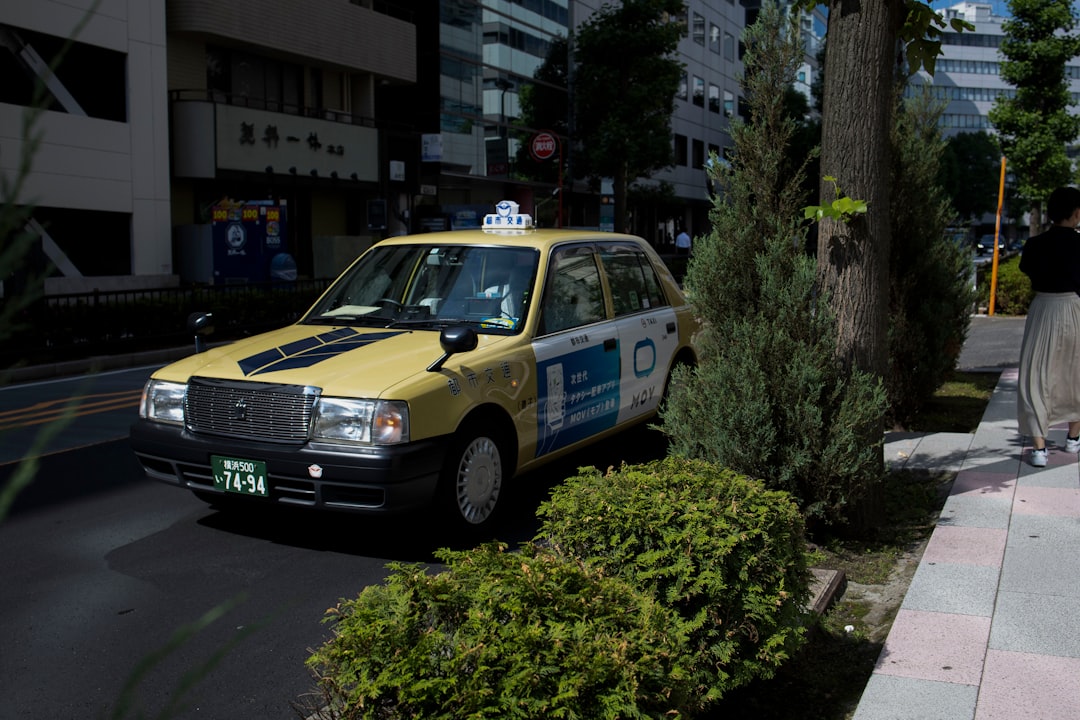“`html
Tokyo Embarks on a Driverless Taxi Revolution: What You Need to Know
Imagine hailing a taxi and no one’s behind the wheel. That’s no longer a scene from a sci-fi movie; it’s reality in parts of Tokyo. Recently, the city began operating fully autonomous taxis, marking a significant leap forward in the future of transportation. But what does this really mean, and why should you care?
The Dawn of Driverless Rides: A Closer Look
These aren’t just advanced cruise control systems; these are Level 4 autonomous vehicles. This means the car can handle all driving tasks in specific geographic areas and under certain conditions without human intervention. While a human operator is often present remotely to monitor the ride and intervene if needed, the car itself is doing the driving.
The initial rollout is limited to certain areas of Tokyo, and users access the service through a dedicated app. Safety is paramount, and the technology is being carefully monitored and refined as it gathers real-world data.
Why This Matters: The Ripple Effects of Autonomous Transportation
The introduction of autonomous taxis in Tokyo signifies more than just a technological achievement. It has the potential to drastically reshape several aspects of our lives:
- Accessibility: Autonomous vehicles can provide transportation to people who cannot drive themselves, such as the elderly or individuals with disabilities. This is particularly crucial in aging societies like Japan, where ensuring mobility for everyone is a growing concern.
- Efficiency: AI-powered driving can optimize routes, reduce traffic congestion, and minimize accidents. Over time, this could lead to smoother commutes and lower transportation costs. Imagine fewer traffic jams and optimized traffic flow!
- Economic Impact: While the transition will undoubtedly impact the taxi industry, it also creates new opportunities in fields like software development, AI maintenance, and infrastructure management. New business models and services will emerge around this technology.
- Safety: Autonomous systems are designed to eliminate human error, a leading cause of accidents. While not foolproof, these systems have the potential to significantly improve road safety over time. The constant data logging and AI refinement should lead to safer and safer vehicles.
- Urban Planning: With more efficient and readily available transportation, urban planners can rethink city layouts and reduce reliance on private car ownership. This could lead to more pedestrian-friendly zones and sustainable urban development.
The Impact: Who Benefits, Who Faces Challenges?
The transition to autonomous vehicles isn’t without its challenges. The most immediate impact is felt by traditional taxi drivers, who face potential job displacement. Retraining programs and alternative employment opportunities will be crucial to mitigate this impact. The BBC News business section regularly covers the impact of technology on various industries, offering valuable insights into this transition.
However, many stand to benefit. Consumers will enjoy potentially lower fares and increased convenience. Businesses can leverage autonomous delivery services to streamline operations. The elderly and disabled will gain greater independence. Cities will benefit from reduced congestion and improved air quality.
The Future Outlook: What’s Next for Autonomous Taxis?
Tokyo’s experiment with autonomous taxis is just the beginning. We can expect to see several key developments in the coming years:
- Expansion: The geographic area covered by autonomous taxi services will likely expand as the technology matures and regulations adapt. Expect to see more cities around the globe testing and implementing similar systems.
- Technological Advancements: AI and sensor technology will continue to improve, leading to more reliable and versatile autonomous systems. Expect further refinements in object recognition, decision-making, and navigation capabilities.
- Regulatory Framework: Governments around the world are grappling with the challenge of regulating autonomous vehicles. Clear legal frameworks addressing liability, safety standards, and data privacy will be essential for widespread adoption. Reuters Technology News offers up-to-date coverage on regulations and advancements in the autonomous vehicle space.
- Integration with Public Transportation: Autonomous taxis could seamlessly integrate with existing public transportation systems, providing a “last-mile” solution to connect people to buses, trains, and subways. Imagine a completely interconnected transportation network.
- Acceptance and Trust: Building public trust in autonomous vehicles is crucial. Transparency, education, and rigorous safety testing will be essential to overcome any reservations people may have about riding in driverless cars.
Addressing the “What Ifs”: Safety, Security, and Ethical Considerations
The deployment of autonomous taxis raises some important “what if” scenarios:
- Cybersecurity: Autonomous vehicles rely on sophisticated software, making them vulnerable to hacking. Robust cybersecurity measures are essential to prevent malicious actors from taking control of the vehicles.
- Accident Scenarios: Who is liable in the event of an accident involving an autonomous vehicle? This is a complex legal question that needs to be addressed through clear regulations.
- Ethical Dilemmas: In unavoidable accident scenarios, autonomous vehicles may have to make split-second decisions that involve ethical considerations. How should these decisions be programmed?
- Data Privacy: Autonomous vehicles collect vast amounts of data about their surroundings and their passengers. Protecting data privacy and preventing misuse of this data is paramount.
These are complex issues that require careful consideration and ongoing dialogue between policymakers, technologists, and the public. Solving these challenges is crucial for realizing the full potential of autonomous transportation.
Tokyo’s foray into autonomous taxis is a bold step towards a future where transportation is safer, more efficient, and more accessible. While challenges remain, the potential benefits are undeniable. It’s a journey worth watching, and one that will likely shape the way we move around for generations to come.
Further Exploration
Continue your exploration into the world of GenAI and its impact on transportation and beyond right here at ExploreGenAI.com! We’ll be covering the latest breakthroughs, ethical considerations, and societal implications of this rapidly evolving field.
“`

